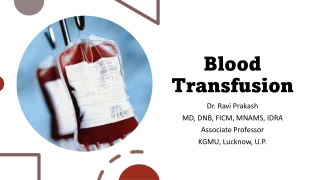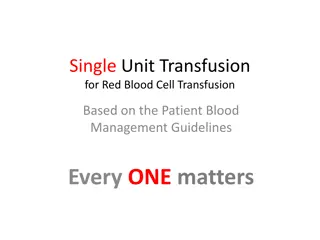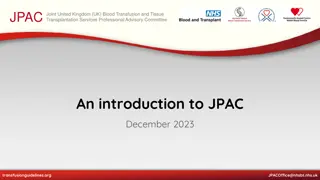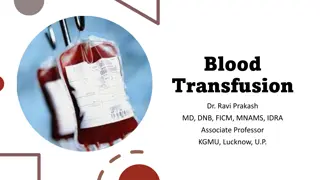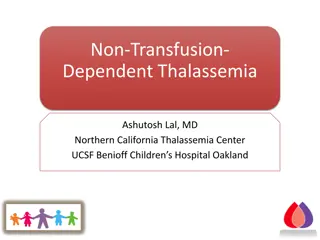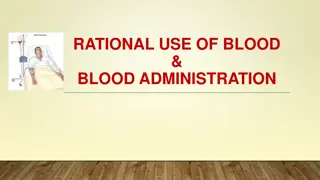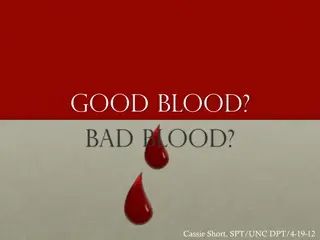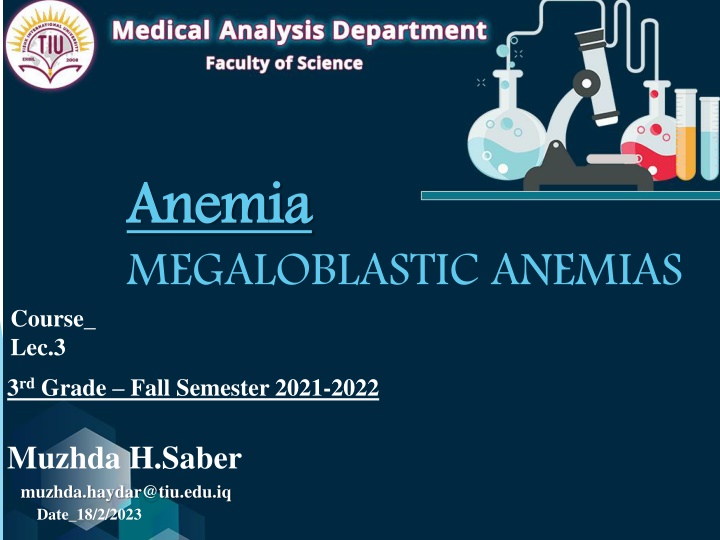
Megaloblastic Anemias and Their Causes
Explore the classification, causes, and types of megaloblastic anemias, including vitamin B12 and folate deficiencies. Learn about the morphology of red blood cells, etiology, and implications for patient care.
Download Presentation

Please find below an Image/Link to download the presentation.
The content on the website is provided AS IS for your information and personal use only. It may not be sold, licensed, or shared on other websites without obtaining consent from the author. If you encounter any issues during the download, it is possible that the publisher has removed the file from their server.
You are allowed to download the files provided on this website for personal or commercial use, subject to the condition that they are used lawfully. All files are the property of their respective owners.
The content on the website is provided AS IS for your information and personal use only. It may not be sold, licensed, or shared on other websites without obtaining consent from the author.
E N D
Presentation Transcript
Anemia MEGALOBLASTIC ANEMIAS Anemia Course_ Lec.3 3rd Grade Fall Semester 2021-2022 Muzhda H.Saber muzhda.haydar@tiu.edu.iq Date_18/2/2023
Anemia :is a condition in which you lack enough healthy red blood cells to carry adequate oxygen to your body's tissues. Types of anemia: 1-Iron deficiency anemia. This most common type of anemia is caused by a shortage of iron in your body. . 2-Vitamin deficiency anemia. ... 3-Anemia of inflammation. ... 4-Aplastic anemia. ... 5-Anemias associated with bone marrow disease. ... 6-Hemolytic anemias. ... 7-Sickle cell anemia.
CLASSIFICATION OF ANEMIAS :- 1. The morphology of the RBC. The normocytic, normochromic anemia. The macrocytic, normochromic anemia. The microcytic, hypochromic anemia. 2. The etiology (pathophysiology). Increased RBC loss. Decreased or defective cell production.
MEGALOBLASTIC ANEMIAS Are Classified morphologically as macrocytic normochromic . Caused by vitamin B12 and folic acid deficiencies which result in disordered DNA synthesis .
Causes of vitamin B12deficiency 1- Low dietary intake vegans 2- Impaired absorption * Stomach -pernicious anemia production (Congenital) of intrinsic factor. - Gastroctomy. * Small bowel - ileal disease or resection . - Bacterial overgrowth . - Tropical sprue . - Fish tapeworm . 3- Abnormal metabolism - Congenital transcobalamin II deficiency . - Nirtous oxide (inactivates B12).
Causes of folate deficiency Nutritinol major cause 1. poor intake A. Ex: Old age, poor social condition, starvation, alcohol excess. Poor intake due to anorexia B. Gastrointestinal disease, e.g. partial gastrectomy, coeliac disease, crohn s disease ,or Cancer. 2. Excess utilization physiological A. Ex: Pregnancy, Prematurity, Lactation.
Causes of folate deficiency B. Pathological Haematological disease with excess red cell production, or malignant disease with increased cell turnover, or inflammatory disease ,e.g. homocystinuria, or haemodialysis or peritoneal dialysis . Malabsorption 3. Occurs in small bowel disease, but the effect is minor compared with that of anorexia. Antifolatedrugs 4. e.g. Methotrexate.
Hematological findings :- The blood film can point towards vitamin deficiency: Decreased (RBC) count and hemoglobin levels Increased mean corpuscular volume (MCV> ,95 fl) and mean corpuscular hemoglobin (MCH) The reticulocyte count is normal. The platelet count may be reduced. Neutrophil granulocytes may show multisegmented nuclei ("senile neutrophil"). This is thought to be due to decreased production and a compensatory prolonged lifespan for circulating neutrophils .
Hematological findings :- The blood film can point towards vitamin deficiency: Decreased (RBC) count and hemoglobin levels Increased mean corpuscular volume (MCV, >95 fl) and mean corpuscular hemoglobin (MCH) The reticulocyte count is normal. The platelet count may be reduced. Neutrophil granulocytes may show multisegmented nuclei ("senile neutrophil"). This is thought to be due to decreased production and a compensatory prolonged lifespan for circulating neutrophils .
Hematological findings :- Anisocytosis (increased variation in RBC size) and poikilocytosis (abnormally shaped RBCs) . Macrocytes (larger than normal RBCs) are present . Ovalocytes (oval shaped RBCs) are present . Bone marrow (not normally checked in a patient suspected of megaloblastic anemia) shows megaloblastic hyperplasia . Howell-Jolly bodies (chromosomal remnant) also present .
Hematological findings :- Blood chemistries will also show: Increased homocysteine and methylmalonic acid in B12 deficiency Increased homocysteine in folate defiency Other method of investegation : - Bone marrow. Serum bilirubin . Serum vitamin B12 . Sreum folate level
Analysis:- The Schilling test was performed in the past to determine the nature of the vitamin B12 deficiency, but due to the lack of available radioactive B12 ,it is now largely a historical artifact. Vitamin B12 is a necessary prosthetic group to the enzyme methylmalonyl-coenzyme A mutase. B12 deficiency leads to dysfunction of this enzyme and a buildup of its substrate, methylmalonic acid, the elevated level of which can be detected in the urine and blood. Since the level of methylmalonic acid is not elevated in folic acid deficiency, this test provides a one tool in differentiating the two.
Analysis:- However, since the test for elevated methylmalonic acid is not specific enough, the gold standard for the diagnosis of B12 deficiency is a low blood level ofB12 . Unlike the Shilling test, which often included B12 with intrinsic factor, a low level of blood B12 gives no indication as to the etiology of the low B12 ,which may result from a number of mechanisms.
Homework 1-Can stress increase B12 levels?? 2-What happens when your vitamin B12 is low?

